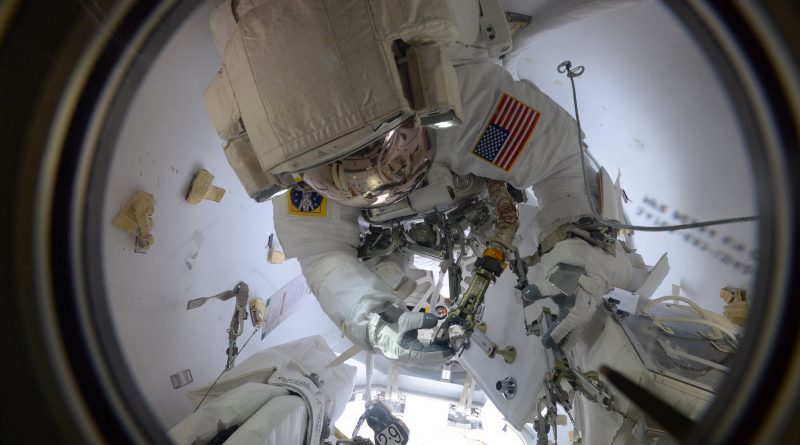Contingency Spacewalk on Tap for Station Crew to Replace Failed Computer Box
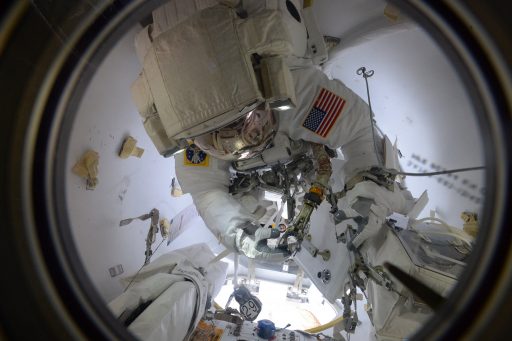
NASA approved plans for an unscheduled spacewalk outside the International Space Station on Tuesday to swap a computer box on the Station’s central truss segment that failed on Saturday. The replacement will be completed by NASA Astronauts Peggy Whitson and Jack Fischer and is the central task of Tuesday’s contingency EVA, creating a planned two-hour spacewalk timeline.
The failure of the computer box, known as a Multiplexer/Demultiplexer or MDM for short, occurred on Saturday and is believed to lie within the External Control Zone 1 MDM – one of two upper-tier computer boxes in charge of controlling the Station’s various external systems including power, cooling and robotics. With EXT-1 down, all computing tasks were handed off to the EXT-2 MDM which continues functioning in perfect fashion, but leaves ISS in a situation where a failure of EXT-2 would cause a loss of insight and commanding of the majority of external systems – requiring an EVA on short notice as the MDMs can not be swapped out by the Station’s robots.
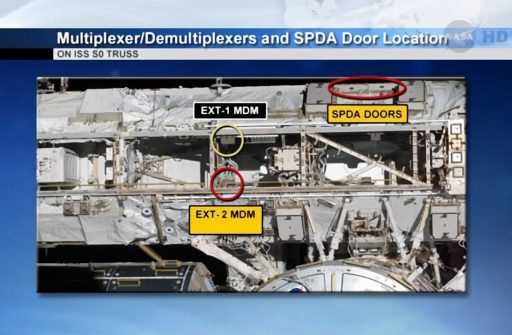
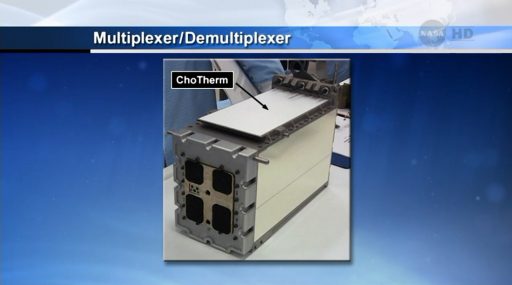
NASA says the cause of the MDM failure is unknown but Mission Controllers are confident the fault is within the EXT-1 box based on the signature of the failure. ISS Mission Managers convened on Sunday and approved plans for a contingency spacewalk on Tuesday with the crew receiving their EVA procedures for a full day of reviews ahead of equipment preparations on Monday to be ready to head out the door at 12 UTC on Tuesday. The MDM replacement is a fairly simple task and rehearsed by crews prior to flight.
The two EXT MDMs reside on the Station’s S0 truss segment and were replaced only recently by Astronaut Shane Kimbrough during EVAs 40 and 41 back in March to upgrade from a previous generation to Ethernet-capable MDMs with much improved processing power. What caused the MDM to fail after less than two months of operation will be scrutinized once the unit returns to the ground to rule out design flaws within the newer make of MDMs.
The original MDMs launched with the S0 truss segment aboard Space Shuttle Atlantis in April 2002 and functioned for 12 years until the EXT-2 MDM on the lower face of S0 suffered a failure in 2014. The EXT-2 MDM was replaced by spacewalkers Rick Mastracchio and Steve Swanson in a 96-minute EVA on April 23, 2014 to restore the control system of ISS to full capacity. EXT-1 continued functioning well until its replacement with an ‘EPIC’ MDM back on March 30 to enhance the Station’s control system for upcoming Commercial Crew missions to the complex.
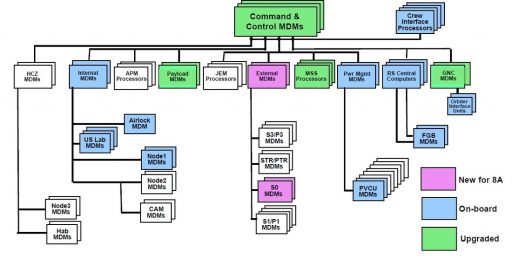
MDMs are found inside and outside the ISS and, with their associated data network, build the brain and nervous system of ISS, responsible for command and control of all the Station’s systems as well as the communication in between the systems and with the crew and ground through a series of interfaces. ISS uses close to 50 Multiplexers-Demultiplexers which, in essence, consist of a stack of avionics cards customized for each MDM’s function.
The MDMs provide commanding and control to all systems and return telemetry for downlink to the ground. Commanding of ISS is accomplished through the MDMs that are controlled via ground commands or crew inputs into laptops connected to the MDMs.
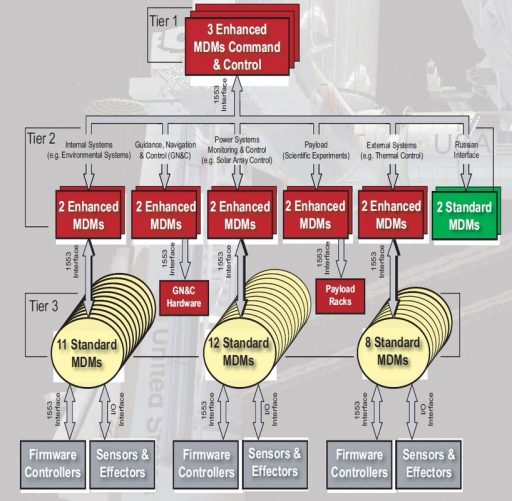
Building the backbone of the Station’s Command and Control System, the MDMs are needed to control all functions of ISS including power generation & distribution, attitude control & navigation, environmental control, communications with the ground, monitoring & commanding the various scientific payloads, and handling data collected by the different systems including basic telemetry data, complex scientific data or video from the payloads.
The Command & Control System of the Station employs a hierarchical design approach using three tiers of command systems going down from a control to a local and to a user level. Commands and telemetry flow sequentially through the tiers that use specific MDMs built to fulfill a certain task.
Three Enhanced Command & Control (C&C) MDMs form the brains of the Space Station (Tier 1) being connected to the on-orbit data networks and all other ISS MDMs, sensors and effectors through the data network on ISS. These three main MDMs are connected to six pairs of redundant MDMs (Tier 2) that fulfill systems specific roles on a local stage and are responsible for the commanding and control of the MDMs of individual systems which are known as Tier 3 MDMs.
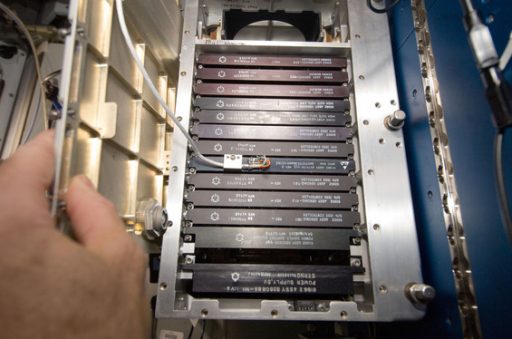
The two EXT MDMs represent Tier 2 MDMs connected to eight user-level MDMs. They are in charge of a number of external systems including the Mobile Transporter, the Thermal Radiator Rotary Joints that move the ETCS radiators, the Solar Alpha Rotary Joints that rotate the solar arrays to track the sun, the Wireless External Transceiver Assemblies, Rate Gyros and the Floating Point Measurement Unit as well as components of the Secondary Power System and the Passive Thermal Control System.
There are several types of MDMs holding a different number of input/output cards and in recent years an effort was underway to enhance the Station’s command and control system by introducing what is known as the EPIC MDM, utilizing Enhanced Processor & Integrated Communications which give the MDMs faster computing power, increased memory and an Ethernet interface, taking the Station’s computer technology into the 21st Century.
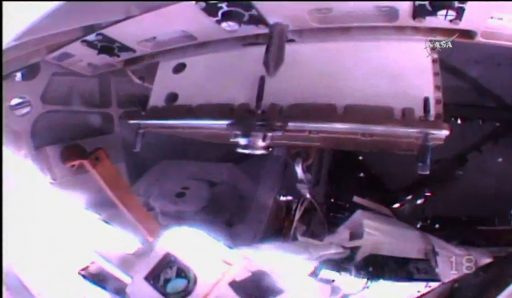
Over the last five years, numerous internal MDMs were upgraded to the newer standard and U.S. EVAs #40 / #41 took the EPIC MDMs outside. The need for replacing the external MDMs arose as part of the Station’s upgrades for commercial crew operations, requiring the EXT MDMs to operate the Common Communications for Visiting Vehicle space-to-space communications system.
The new EXT MDM based on EPIC technology were fabricated in orbit back in January by the Station’s crew who fit existing MDM housings with new circuit cards and Ethernet interfaces in readiness for its installation on the exterior of ISS. Both of the new EXT MDMs were checked out by the crew inside ISS before being installed during the two March EVAs and checks by Mission Control verified each MDM’s functionality before entering active duty as part of the Station’s command and control system.
Why a component rated for ten years of operation outside the Station suffered a failure after two months remains to be understood.
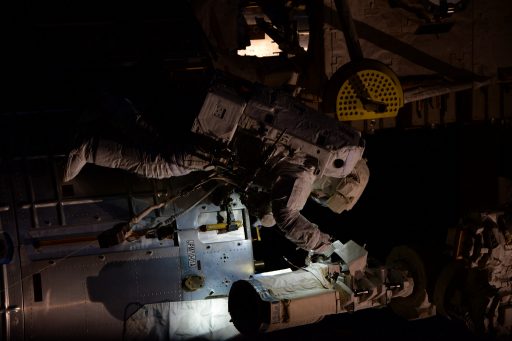
For Tuesday’s EVA, Whitson and Fischer will have the luxury of two Service and Cooling Umbilicals after having to share a single umbilical between the two of them on their May 12 excursion that marked the 200th spacewalk in support of ISS Assembly and Maintenance. During in-suit pre-breathe, one of the two SCUs exhibited a water leak and was ruled out for the EVA, leaving the two astronauts taking turns using the single SCU to cool their suits and keep their batteries charged.
Due to concerns with battery management and oxygen levels, the EVA was shortened to four hours, but Whitson and Fischer made the most of their time outside – completing four primary and one get ahead task out of six tasks set for the original EVA plan of six and a half hours. A spare SCU was installed in the Quest Airlock last Thursday and the crew purged the feed and transport water lines to fully integrate the SCU and return the airlock to full EVA readiness.
Peggy Whitson will be making her tenth spacewalk on Tuesday while Jack Fischer will be venturing outside for the second time. Based on the scheduled two-hour duration of the spacewalk, Peggy Whitson – who is already the most experienced female spacewalker – will pass NASA Astronauts John Grunsfeld and Jerry Ross to reach the third place on the all-time list for cumulative career EVA time.
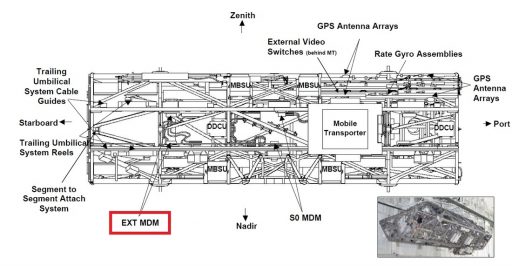
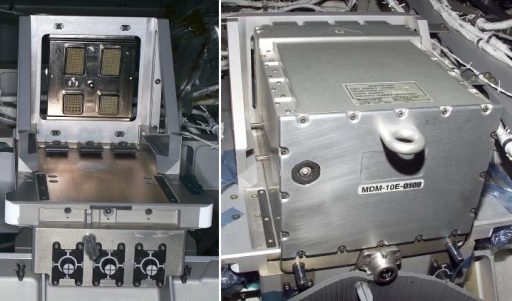
Armed with a Pistol Grip Tool and an ORU bag containing the spare MDM assembled and tested on Sunday, the two crew members will be facing a fairly straightforward two-task EVA procedure.
After egress from the airlock and the typical checks of their suits and tethers, Whitson and Fischer will part ways with Whitson headed along the CETA spur to S0 Face 1 where the EXT-1 MDM resides in the zenith (upper) slot. Fischer will take a pair of antenna assemblies to the Destiny laboratory for installation on the nadir section of the module – a task originally slated for EVA-42 but abandoned due to the SCU problem that shortened the spacewalk.
Each external MDM features two secondary fasteners for structural attachment plus a center screw used to attach the MDM enclosure. Electrical and data connectors have a blind-mate design – they are automatically connected via the rear of the MDM when the unit is installed on its coldplate guided by rails & fasteners. The EPIC MDMs have Ethernet Interfaces requiring additional cables to be connected to the MDMs in addition to the blind-mate connectors.
Whitson will disconnect the Ethernet cable and use the Pistol Grip Tool to release the two secondary bolts with 7 to 14 tools followed by 25-32 turns on the center jacking bolt to demate the MDM. The MDM will then be removed from its slot and a visual inspection will be made of the Chotherm thermal material and blind-mate connectors on its underside to ensure no Chotherm is left on the MDM coldplate and the connectors are not bent or showing signs of electrical arcing.
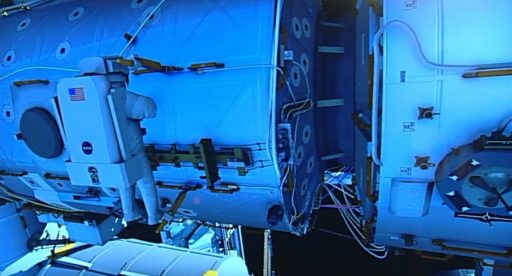
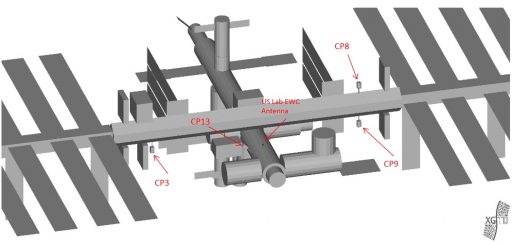
The installation of the spare is the reverse process – seating it in its soft-dock via guide rails and driving the center jacking screw to torque followed by the port and starboard secondary bolts. Once the Ethernet cable is connected via its NZGL interface, Mission Control will be given a GO to apply power to the MDM for a functional test while Whitson cleans up the worksite and takes the removed unit back into the airlock.
Jack Fischer will translate around the lab for the installation of a pair of External Wireless Communications (EWC) antennas. Prerequisite for the EWC task was the removal of handrails completed earlier by Shane Kimbrough, allowing Fischer to simply install the new antennas at their respective Worksite Interfaces and connecting them to the ISS communications infrastructure via a single cable.
Expanding the EWC coverage is necessary for the external HD camera assemblies that have begun deployment to the exterior of ISS; the Lab EWC antennas will become the primary receiving point for the four planned HD assemblies at camera ports 8,9, 3 and 13, routing 10Mbps video into the Station’s hard-line comm system for live downlink to the ground via Ku-Band.
The total time budgeted for U.S. EVA-43 is two hours, but as the 2014 and 2017 MDM replacements have shown, the task can be completed fairly quickly provided all bolts behave.

